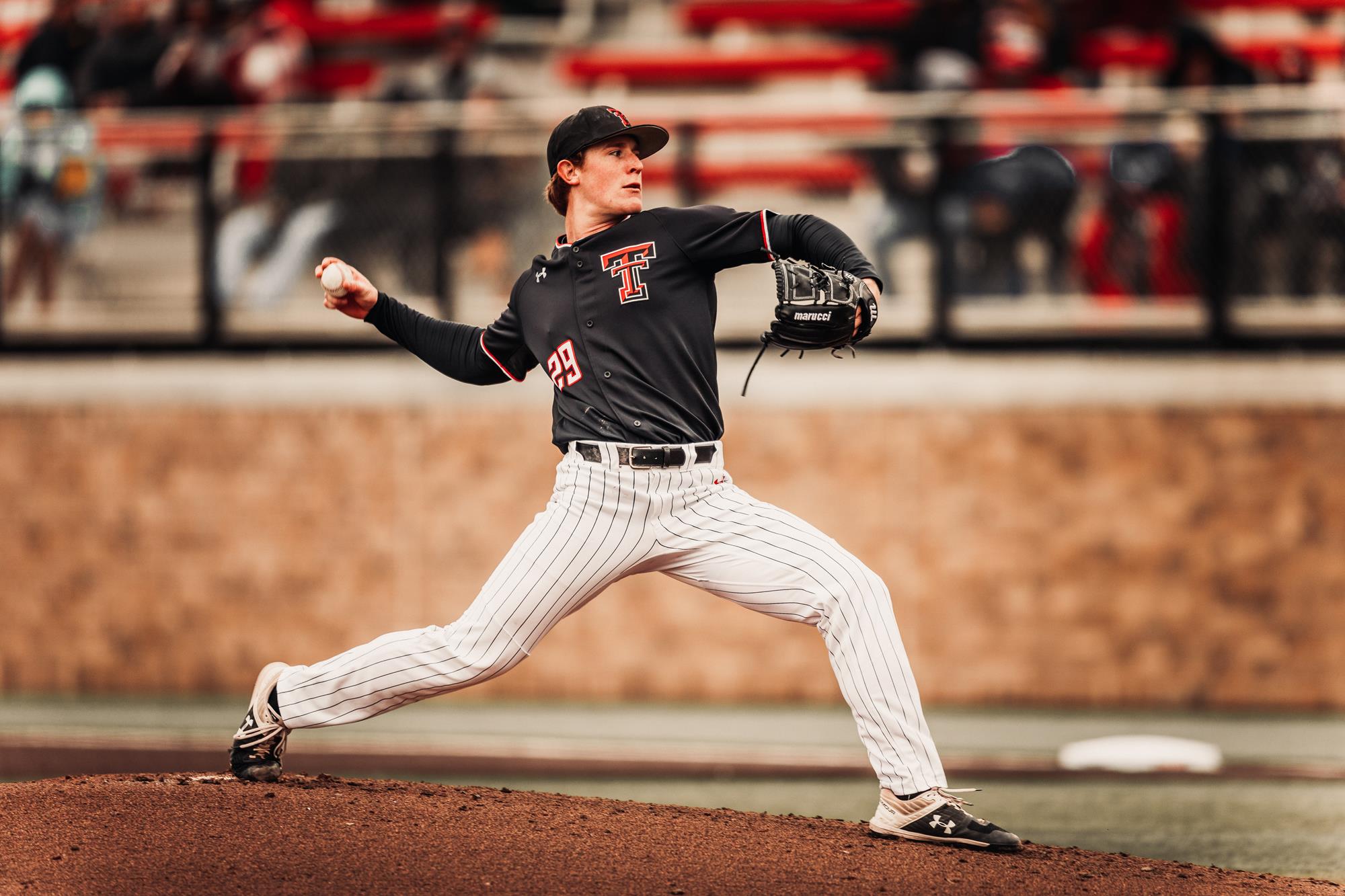Clayton Beeter started pitching in the middle of his junior season of high school baseball at Birdville High in Texas in 2016. He mostly played shortstop for his high school team, but with his arm strength, his coaches believed he had the potential to thrive on the mound, he recalls.
The right-handed pitcher excelled as a senior in high school in 2017, posting a 0.81 ERA and 106 strikeouts in 55 innings. Despite his success, Beeter was “more of a thrower than a pitcher,” he said.
It wasn’t until he stepped foot on Texas Tech University’s campus that he focused solely on pitching in 2017. Beeter suffered an arm injury the fall of his freshman year, though, and missed the entire season.
Now less than three years after undergoing elbow surgery, Beeter is one of the top prospects in June’s MLB draft class.
He’s in a unique situation with only pitching 41 2/3 innings the last two years after this season was cut short due to the coronavirus pandemic. But Beeter possesses major upside and the potential to be one of the best pitchers out of this year’s draft class. Despite his prior injury and lack of innings pitched, there’s a chance he could be a first-round pick in June’s draft.
“It’s an exciting process,” Beeter said. “I’d rather be playing right now and let my actions in the game speak louder more than what I’m having to do now. I’m having to do a lot of video calls, and it’s all exciting. I’m just trying to enjoy the process.”
The start of Beeter’s collegiate career was rocky. He underwent Tommy John surgery his freshman year in December 2017 and then had an arthroscopic procedure done seven months later.
After missing his entire freshman season due to injury, he returned last year and served as Texas Tech’s closer. He was a freshman All-American last year after recording eight saves with a 3.48 ERA, 40 strikeouts and 20 walks allowed in 20 2/3 innings.
As a redshirt sophomore this spring, Beeter moved to the starting rotation, serving as Texas Tech’s ace. He thrived in that role until the NCAA canceled the remainder of the baseball season in mid-March due to the coronavirus pandemic. He posted a 2.14 ERA with 33 strikeouts and four walks allowed in 21 innings.
“I thought I was getting better and better every time I went out there,” Beeter said. “I was excited to see where I was and where I could have ended up as the season went on.”
Beeter is a 6-foot-2, 220-pound right-hander who throws a four-seam fastball, curveball and changeup from an over-the-top delivery that allows him to throw downhill and create deception.
He has a powerful two-pitch mix that he relies on heavily. His fastball and curveball are above-average offerings and allow him to overpower hitters. His fastball sits in the mid-90s and has touched 98 mph.
His curveball might be his best pitch and serves as an extremely effective outpitch. It’s a sharp breaking pitch that consists of 12-to-6 break and typically generates a high percentage of strikeouts.
“My curveball has always been my best pitch and my fastball has caught up with it over the last couple years as the velocity has improved,” Beeter said. “My breaking ball always has been pretty sharp and I try to make it 1-7 or as close to 12-6. I will slow it down sometimes for a strike early in the count and I can speed it up later in the count down in the zone.”
Although it was a small sample size, Beeter showed significant improvement with his command this season. After allowing 8.7 walks per nine innings last year, Beeter limited the number of walks he surrendered this spring to 1.7 walks per nine innings.
He didn’t make any major mechanical adjustments, he said. Instead, he made “one or two” small tweaks to his mechanics from last season. He also has developed more comfort in his mechanics since his injury, as his delivery changed to more over the top following the surgery, he said.
Besides making sure he remains consistent with his mechanics, Beeter also wants to work on his changeup movement. He has a strong feel and a lot of confidence in his changeup but believes it needs to display better movement to be more effective.
“Everyone can improve their changeup movement,” Beeter said. “You see some big leaguers with some nasty movement where it looks like their changeup is just falling off the table. Everyone wants one like that. I think I have the speed difference, but I want to get more movement.”
Beeter’s college career hasn’t gone like he envisioned it would. But he’s thankful for the progress he’s made the last two years and believes he hasn’t fully reached his potential, especially since this spring season ended prematurely.
““I think a team should draft me because I’m a hard-working athlete, and I think I have a lot of upside to develop well in the minor league system,” Beeter said.
Read more stories on top 2020 MLB draft prospects here.
Dan Zielinski III has covered the MLB draft for five years. He’s interviewed 191 of the top draft prospects in that period, including three No. 1 overall picks. Multiple publications, including Baseball America, USA Today and The Arizona Republic, have quoted his work, while he’s appeared on radio stations as a “MLB draft expert.” Follow him on Twitter @DanZielinski3.



[…] Clayton Beeter possesses major upside […]
[…] collegiate season (four walks and a 0.81 WHIP in 21.0 IP). Beeter credits his uptick in command to small mechanical tweaks made in between the 2019 and 2020 seasons. While I’m not in love with the delivery, I feel it […]
[…] hear him describe just how small the changes he made were. In an interview with Dan Zielinski of baseballprospectjournal.com, Beeter describes his adjustments as […]
[…] hear him describe just how small the changes he made were. In an interview with Dan Zielinski of baseballprospectjournal.com, Beeter describes his adjustments as […]